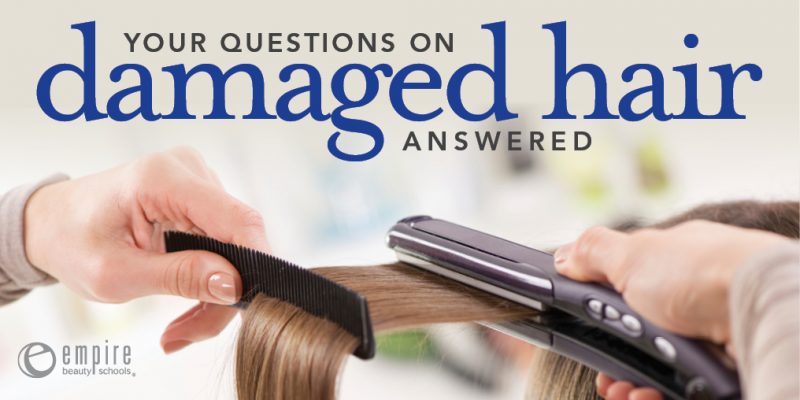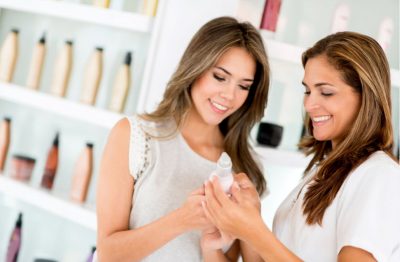Your Questions on Damaged Hair Answered
Most women—even those blessed with the greatest heads of hair—experience hair damage at some point in their lives, and it’s never a good feeling!
To effectively repair damaged hair and prevent it from becoming damaged in the future, it’s important to first understand what can cause it. We can help.
What you do to your hair.
Do you color your hair? Do you get it chemically straightened or relaxed? If you do, how often are you getting these treatments done? Over processing your hair is a major culprit of damaged hair. Talk to your stylist about how often to get these services and follow their recommendations. They will know how much time is needed between treatments to keep your hair healthy.
How you treat your body.
What is your diet like? Are you eating a balanced diet with enough protein? Do you eat fruits and vegetables, or do you live on junk food? Hair is essentially made out of protein, so if you’re not getting enough protein, your hair isn’t either. If you’re not crazy about vegetables, consider a multivitamin. Hair needs vitamins and minerals to stay healthy. Do you stay properly hydrated? Make sure you are drinking a lot of water and keep your alcohol intake to a reasonable level. Alcohol has a very drying effect on hair.
Even by following these tips, your hair may still be damaged. So, we’ll look at how to treat damaged hair.
Cutting off damaged ends.
Many of us don’t like to cut too much length off of our hair. However, cutting off damaged ends is the fastest way to improve the appearance of your hair and get it back on a healthy track.
Switch your shampoo and conditioner.
Dry, damaged hair needs a little more TLC than what the standard shampoo and conditioner products in the grocery store shelves have to offer. If you have damaged hair, shampoo sole at your salon is an investment you need to make. There is a reason these products come with a higher price tag—it’s because they have the best ingredients to treat damaged hair and are very concentrated. Look for sulfate-free products and those with a pearly appearance, which indicates moisturizing ingredients. Also look for products containing protein, vitamins and amino acids. Steer clear from alcohol-based products. Remember to consider your hair type. If you have fine hair for example, you’ll want to avoid heavy creams or oils that could weigh it down. Products that emphasize scalp health are also a good choice. They contain vitamins and minerals that you may be missing in your diet.
Pay attention to how you use styling tools.
Heat styling tools won’t cause damage if they are used correctly. However, if you don’t use them correctly or if you use them too often, they can. When blow drying your hair, don’t keep the heat on one area of your hair for too long. You can also use a conditioner that is formulated to protect hair against heat.
So there you have it—how to get and keep a beautiful head of healthy hair from root to tip. We hope your hair thanks you.


